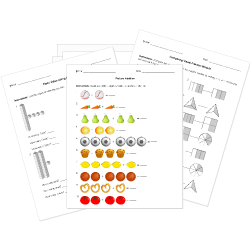Common Core Standard HSN-VM.C.10 Questions
(+) Understand that the zero and identity matrices play a role in matrix addition and multiplication similar to the role of 0 and 1 in the real numbers. The determinant of a square matrix is nonzero if and only if the matrix has a multiplicative inverse.
You can create printable tests and worksheets from these questions on Common Core standard HSN-VM.C.10! Select one or more questions using the checkboxes above each question. Then click the add selected questions to a test button before moving to another page.







